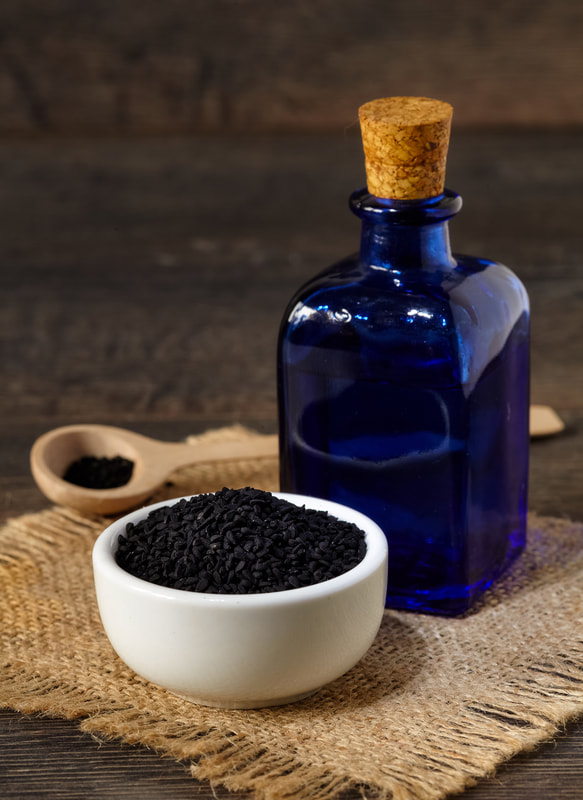- HOME - START HERE
- CONSULTATION SERVICES
- 911 EMERGENCY
- EBOOKS
- Store
- DOSAGES
- HOW TO TAKE
- ANTI-AGING
- CBD AND NIGELLA SATIVA
- RESEARCH SHOWS THAT CANCER RATES WILL RISE DRASTICALLY OVER THE COMING YEARS
- FIBRO CATEGORY
- HERPES CATEGORY
- HIV- Category
- Honey - Category
- Pets
- Top 20 Reasons to use Black Cumin Oil and Capsules
- STROKES CATEGORY
- WEIGHT LOSS CATEGORY
- ANSWER THE QUESTIONS
- Articles
- BLACK SEED OIL IS BETTER THAN TYLENOL FOR ARTHRITIS RELIEF
- Migraines - Headaches - 12 Remedies with Pictures
- My Protocol for Dementia Recovery
- PCOS and Nigella Sativa
- PRIVACY POLICY - GDPR COMPLIANT
- My Team
- About
- Healthy Articles
- Nigella Sativa Online Courses - Part 1
- Childhood Epilepsy
- Natural Diuretics
- Healing Effect on Sarcoidosis
- Nigella Sativa Respiratory Illness
- Cardiovascular Disease
- Depression and COVID19
- 12
- How to Use Nigella Sativa
- How Contagious is Leprosy
- Supporting Human Health - The Immunomodulator
- Nigella Sativa Cancer Ebook
- OK, I am a Muslim - Now What?
- Everything You Ever Wanted to Know About Black Seeds
- Islam Cancer Ebook
- DONATION
- Nigella sativa is an safe alternative Non-Hodgkin’s treatment option
- RESEARCH ON WHY YOU SHOULD HEAT NIGELLA SATIVA SEEDS
- Black Seed Cuisine Ebook
- IS THERE A CURE FOR LUPUS - NATURAL SOLUTIONS
- Black Seed Oil
- TURMERIC DETOX AND MORE
- MASTERS OF HEALING
- PAYMENT RECEIVED
- Non-clickable Page
- IRRITABLE BOWEL SYNDROME - NATURAL SOLUTIONS
- MY CANCER COLLECTION
- CONTACT
Nigella Sativa and the Protection Against Radiation and Chemical Weapons Damage
This article is copyrighted for Nigellasativacenter.com only. All rights reserved. This article contains affiliate links to
companies I highly recommend for my clients. Please read my full disclosure statement.
companies I highly recommend for my clients. Please read my full disclosure statement.
|
Humans are increasingly exposed to ionizing radiations through disease diagnostic modalities, cancer treatments, nuclear power production, weapon testing, nuclear industry research, chemical and nuclear warfare, and more.
The growing need for long-term radioprotective remedies had been realized once the harmful effects of radiation were witnessed in Japan after World War II. The realization was reinforced when the aftereffects of radiotherapy for cancer and tumor treatment became apparent. Now, given the tumultuous global political situation and the rising possibility of the possession of destructive chemical and nuclear bombs in the hands of terrorists, the need for successful radioprotection has been reemphasized more than ever before.
Today, Nigella sativa is one of the numerous pharmacological agents used for its radioprotective properties against nuclear radiation and chemical weapons damage. |
What is Nigella Sativa?
Black cumin, black seeds, kalonji, and haba al-barakah, are just some of the globally used names for the seeds of Nigella sativa, a small shrub belonging to the botanical family of Ranunculaceae.With fourteen different known species of this genus,
Nigella sativa is the most extensively researched and used flowering plant for its endless therapeutic benefits.
Native to the Western Asian, North African, Mediterranean,and South European countries, the Nigella sativa plant, its components and derivatives have a long history of being used in alternative medicine and remedies across the globe.
Nigella sativa seeds were found in Ancient Egypt, in the tomb of Pharaoh Tutankhamen.They have been mentioned by Hippocrates, used in Indian medicinal practices of Ayurveda, cited in the Bible, and have been referred to as ‘the remedy for every disease except death’ by the Prophet Mohammad.
In recent times, black cumin seeds have had over 1,000 studies conducted on its various pre-clinical, clinical, and other medicinal benefits over the course of the past three decades.
Black cumin, black seeds, kalonji, and haba al-barakah, are just some of the globally used names for the seeds of Nigella sativa, a small shrub belonging to the botanical family of Ranunculaceae.With fourteen different known species of this genus,
Nigella sativa is the most extensively researched and used flowering plant for its endless therapeutic benefits.
Native to the Western Asian, North African, Mediterranean,and South European countries, the Nigella sativa plant, its components and derivatives have a long history of being used in alternative medicine and remedies across the globe.
Nigella sativa seeds were found in Ancient Egypt, in the tomb of Pharaoh Tutankhamen.They have been mentioned by Hippocrates, used in Indian medicinal practices of Ayurveda, cited in the Bible, and have been referred to as ‘the remedy for every disease except death’ by the Prophet Mohammad.
In recent times, black cumin seeds have had over 1,000 studies conducted on its various pre-clinical, clinical, and other medicinal benefits over the course of the past three decades.
Chemical Properties of Nigella Sativa
The chemical composition and properties of black seeds and its derivatives, such as the black seed oil, is very diverse.
Nigella sativa is a rich source of several minerals,containing calcium,potassium, copper, zinc, and iron, as well as, vitamins A, C, B1, B2, and B3.
It also contains various fixed and volatile oils, alkaloids, saponins,and other equally essential chemical compounds.
The four main components found in the black cumin seeds, which display essential protective properties, include carvacrol, t-anethole, thymoquinone, and 4-terpineol.Thymoquinone, or TQ,is the most bioactive constituent of the black seed volatile oil offering several pharmacological benefits, especially as a radioprotective agent against nuclear radiation and chemical warfare damage.
The chemical composition and properties of black seeds and its derivatives, such as the black seed oil, is very diverse.
Nigella sativa is a rich source of several minerals,containing calcium,potassium, copper, zinc, and iron, as well as, vitamins A, C, B1, B2, and B3.
It also contains various fixed and volatile oils, alkaloids, saponins,and other equally essential chemical compounds.
The four main components found in the black cumin seeds, which display essential protective properties, include carvacrol, t-anethole, thymoquinone, and 4-terpineol.Thymoquinone, or TQ,is the most bioactive constituent of the black seed volatile oil offering several pharmacological benefits, especially as a radioprotective agent against nuclear radiation and chemical warfare damage.
Various Pharmacological and Phytochemical Properties of Nigella Sativa
Owing to its extensive and diverse range of bioactive constituents, Nigella sativa has an abundance of pharmacological properties and health benefits.Some of the most common ones include:
Owing to its extensive and diverse range of bioactive constituents, Nigella sativa has an abundance of pharmacological properties and health benefits.Some of the most common ones include:
- Antibacterial Properties: Strongly resistant against a number of gram-positive and gram-negative species, such as,Staphylococcus aureus and E. coli, respectively.
- Antifungal Properties:Promotes inhibitory activity against Fusarium solani, Epidermophytonspp., as well as, clinical isolates, such as, various yeasts, dermatophytes, and mold.
- Antiviral Properties:Facilitates and enhances helper-T-cell and natural killer cell activities, and acts as a suppressor for HIV virus protease and murine cytomegalovirus.
- Anti-Inflammatory Properties:Reduces the production ofinterleukin-1, cyclooxygenase2, and a number of other pro-inflammatory mediators. It is found to be topically effective, upon inhalation and ingestion.
- Antioxidant Properties:Due to the free radical scavenging activity, it aids in inhibiting oxidative stress-inducing effects of free radicals.
- Anti-Diabetic Properties: Aids in the augmentation of C-peptide and insulin levels in the body to regulate or reduce blood glucose levels as needed. It has also been proven advantageous in the prevention of insulin resistant diabetes mellitus.
- Anti-Depressant Properties: Contains methanol,which has potent analgesic and anti-depressant properties.
- Anxiolytic Properties:Enhances serotonin and tryptophan levels to alleviate anxiety, and improves memory and learning, as well.
- RadioprotectiveProperties: Neutralizes free radicals and prevents oxidation of proteins and peroxidation of membrane lipids when pre-treated with Nigella sativa or black seed extracts, successfully protecting the healthy cells from unwanted damage. This is especially helpful for victims who have been exposed to radiation from chemical or nuclear weapon attacks.
- Chemoprotective Properties: Has inhibitory effects on the cellular proliferation of cancer cells, thus preventing cancers from metastasizing malignantly.
- Anti-Cancer Properties: Its known stimulation of the apoptotic effects on targeted cells facilitates the decrease of multiple cancers in the human body.
Protection Against Chemical Weapon Induced Respiratory Damage
Chemical weapons of warfare or mass destruction are toxic chemical agents, which are deployed in the form of aerosols, gas, liquid, or powder, known to cause either lethal or significantly incapacitating side effects on the exposed. One of the most commonly used chemical warfare agents are the mustard agents.
A mustard agent or bis-(2-chloroethyl) sulphide reacts violently with a large number of human biological molecules, leading to severe damage to the respiratory system, eyes, and a number of other internal organs.The sulfur mustard gas is known to be particularly destructive for the lungs and the airways, causing airway and lung inflammation and hyper-responsiveness.
It has been indicated that Nigella sativa has a considerable inhibitory effect on bronchial inflammation by limiting the inflammatory cell infiltration. Furthermore, the Nigella sativa extract has proved beneficial in halting the lung necrosis formation, thereby improving the rate of recovery for a sulfur mustard gas induced lung injury.
Furthermore, it also aids in the recovery of hypoxia-induced lung damage. The inflammation suppression also decreases the tracheal hyper-responsiveness, helping reduce the various respiratory symptoms affecting chemical warfare victims, such as chest wheezing, by having a bronchodilatory effect.
Based on the existing evidence and research, it can be safely concluded that the addition of Nigella sativa in the list of radio- and chemo-protective pharmacological agents is completely justified. It really is the remedy for every medicinal malady, even the gruesome damage caused by nuclear radiation and chemical weapons.
We here at NigellaSativaCenter.Com Highly Recommend this Black Cumin Seed Oil as the best on the market.
Chemical weapons of warfare or mass destruction are toxic chemical agents, which are deployed in the form of aerosols, gas, liquid, or powder, known to cause either lethal or significantly incapacitating side effects on the exposed. One of the most commonly used chemical warfare agents are the mustard agents.
A mustard agent or bis-(2-chloroethyl) sulphide reacts violently with a large number of human biological molecules, leading to severe damage to the respiratory system, eyes, and a number of other internal organs.The sulfur mustard gas is known to be particularly destructive for the lungs and the airways, causing airway and lung inflammation and hyper-responsiveness.
It has been indicated that Nigella sativa has a considerable inhibitory effect on bronchial inflammation by limiting the inflammatory cell infiltration. Furthermore, the Nigella sativa extract has proved beneficial in halting the lung necrosis formation, thereby improving the rate of recovery for a sulfur mustard gas induced lung injury.
Furthermore, it also aids in the recovery of hypoxia-induced lung damage. The inflammation suppression also decreases the tracheal hyper-responsiveness, helping reduce the various respiratory symptoms affecting chemical warfare victims, such as chest wheezing, by having a bronchodilatory effect.
Based on the existing evidence and research, it can be safely concluded that the addition of Nigella sativa in the list of radio- and chemo-protective pharmacological agents is completely justified. It really is the remedy for every medicinal malady, even the gruesome damage caused by nuclear radiation and chemical weapons.
We here at NigellaSativaCenter.Com Highly Recommend this Black Cumin Seed Oil as the best on the market.
Resources:
https://www.ncbi.nlm.nih.gov/pmc/articles/PMC3037297/
https://www.ncbi.nlm.nih.gov/pmc/articles/PMC3660866/#ref2
https://www.ncbi.nlm.nih.gov/pmc/articles/PMC3660866/
http://www.tandfonline.com/doi/abs/10.1080/01902140801935082
http://ijpr.sbmu.ac.ir/article_2003_3f9b7cf4268c38c2125748db44d49bd8.pdf
https://www.researchgate.net/profile/Mohammed_Islam16/publication/320044949_Nigellalogy_A_Review_on_Nigella_Sativa/links/59cab600a6fdcc451d582148/Nigellalogy-A-Review-on-Nigella-Sativa.pdf
https://www.marimann.com/wp-content/uploads/2014/10/Black-Seed-Part-II.pdf
https://www.ncbi.nlm.nih.gov/pmc/articles/PMC3048935/
http://www.journal.ac/scholar/v20n3/pdf/DHOCBS_2017_v20n3_179.pdf
https://www.ncbi.nlm.nih.gov/pmc/articles/PMC3037297/
https://www.ncbi.nlm.nih.gov/pmc/articles/PMC3660866/#ref2
https://www.ncbi.nlm.nih.gov/pmc/articles/PMC3660866/
http://www.tandfonline.com/doi/abs/10.1080/01902140801935082
http://ijpr.sbmu.ac.ir/article_2003_3f9b7cf4268c38c2125748db44d49bd8.pdf
https://www.researchgate.net/profile/Mohammed_Islam16/publication/320044949_Nigellalogy_A_Review_on_Nigella_Sativa/links/59cab600a6fdcc451d582148/Nigellalogy-A-Review-on-Nigella-Sativa.pdf
https://www.marimann.com/wp-content/uploads/2014/10/Black-Seed-Part-II.pdf
https://www.ncbi.nlm.nih.gov/pmc/articles/PMC3048935/
http://www.journal.ac/scholar/v20n3/pdf/DHOCBS_2017_v20n3_179.pdf
|
COME JOIN MY MEMBERSHIP GROUP - DO YOU MISS ME? THE COST IS $9.95 PER MONTH. LEARN THE DEEP SECRETS OF BEING WELL.
PAYMENT LINK HERE |
STORE TESTIMONY CONTACT EBOOKS ABOUT PAGE PRIVATE POLICYAmazon Affiliate Disclosure
https://www.nigellasativacenter.com is a participant in the Amazon Services LLC Associates Program, an affiliate advertising program designed to provide a means for website owners to earn advertising fees by advertising and linking to amazon(.com, .co.uk, .ca etc) and any other website that may be affiliated with Amazon Service LLC Associates Program. “Amazon and the Amazon logo are trademarks of Amazon.com, Inc. or its affiliates.” Please note I am also an affiliate for Mountain Rose Herbs, , Shareasale and More. Please see our full disclosure here: Disclaimer: The information on this page and on this website has not been evaluated by the FDA. We do not diagnose, treat, cure or prevent illness or disease - instead, we try to help people learn how to do so themselves. Anyone who believes they have a serious medical condition or health issue should seek diagnoses from a qualified medical professional before making any decisions on how to best address their health. Furthermore, anyone contemplating using any products or information on this website must accept such use as experimental and voluntary. No claims are made regarding the therapeutic use of the products or information on this website and all products featured or sold on this website must be considered nutritional supplements only. -
Copyright Protected - Nigella Sativa.com - 2022-2025 - All Rights Reserved - Any infringe on our copyright will be prosecuted to the fullest extent of the law.
|
OWNER: SAMANTHA DAVIS
WEBSITE: BASED ON EVIDENCE ADDRESS: PO BOX 437, ZARGA, JORDAN 13110 PHONE: +962-53923471 HOURS: 5PM - 12AM - NY;TIME EMAIL: naturalliving [email protected] CONSULTATION FEES 1 STOP CENTER IS BASED ON ALL MODALITIES OF HEALING, NOT JUST NIGELLA SATIVA |
- HOME - START HERE
- CONSULTATION SERVICES
- 911 EMERGENCY
- EBOOKS
- Store
- DOSAGES
- HOW TO TAKE
- ANTI-AGING
- CBD AND NIGELLA SATIVA
- RESEARCH SHOWS THAT CANCER RATES WILL RISE DRASTICALLY OVER THE COMING YEARS
- FIBRO CATEGORY
- HERPES CATEGORY
- HIV- Category
- Honey - Category
- Pets
- Top 20 Reasons to use Black Cumin Oil and Capsules
- STROKES CATEGORY
- WEIGHT LOSS CATEGORY
- ANSWER THE QUESTIONS
- Articles
- BLACK SEED OIL IS BETTER THAN TYLENOL FOR ARTHRITIS RELIEF
- Migraines - Headaches - 12 Remedies with Pictures
- My Protocol for Dementia Recovery
- PCOS and Nigella Sativa
- PRIVACY POLICY - GDPR COMPLIANT
- My Team
- About
- Healthy Articles
- Nigella Sativa Online Courses - Part 1
- Childhood Epilepsy
- Natural Diuretics
- Healing Effect on Sarcoidosis
- Nigella Sativa Respiratory Illness
- Cardiovascular Disease
- Depression and COVID19
- 12
- How to Use Nigella Sativa
- How Contagious is Leprosy
- Supporting Human Health - The Immunomodulator
- Nigella Sativa Cancer Ebook
- OK, I am a Muslim - Now What?
- Everything You Ever Wanted to Know About Black Seeds
- Islam Cancer Ebook
- DONATION
- Nigella sativa is an safe alternative Non-Hodgkin’s treatment option
- RESEARCH ON WHY YOU SHOULD HEAT NIGELLA SATIVA SEEDS
- Black Seed Cuisine Ebook
- IS THERE A CURE FOR LUPUS - NATURAL SOLUTIONS
- Black Seed Oil
- TURMERIC DETOX AND MORE
- MASTERS OF HEALING
- PAYMENT RECEIVED
- Non-clickable Page
- IRRITABLE BOWEL SYNDROME - NATURAL SOLUTIONS
- MY CANCER COLLECTION
- CONTACT





